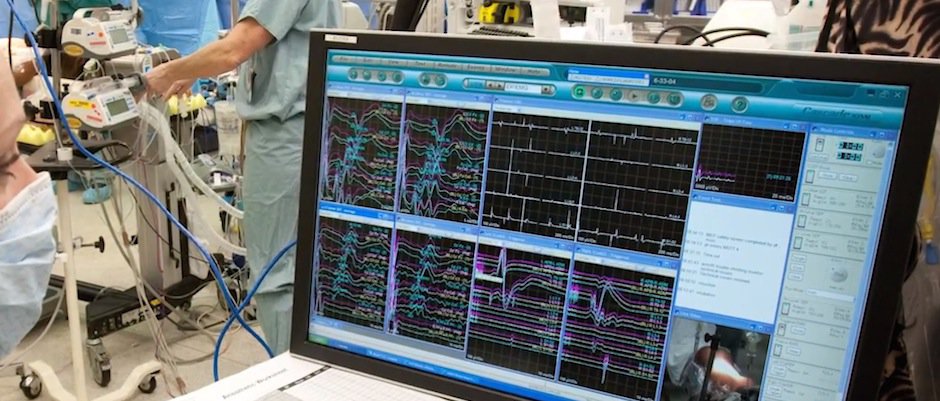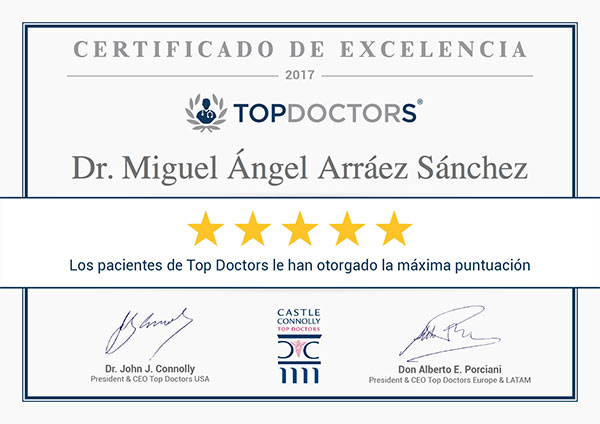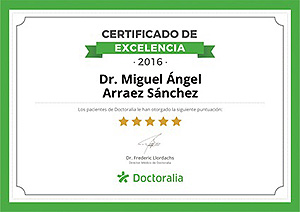Technologies used in the operating room
We have the most advanced and sophisticated technologies to carry out all forms of cranial, spinal and spine surgical interventions, some of which, such as fluorescence-guided resection, neuro-navigation with electromagnetic system, were introduced in Spain through Malaga as a pioneering centre.
INTRA-OPERATIVE MONITORING
Intraoperative neurophysiological monitoring (IOM) uses various neurophysiological techniques in the operating room to monitor nerve function during surgery, avoiding potential neurological injuries, which decreases morbidity and improves surgical management, allowing more aggressive surgeries and improving surgical strategies. There are two types of techniques in neurophysiological monitoring, those of mapping -which identify the structures at risk- and those of monitoring itself - that provide a continuous feed-back of the function- as well as its complications, which although fortunately infrequent, still exist. IOM is one of the most important advances in modern neurosurgery.
TUMOR RESECTION GUIDED BY FLUORESCENCE
The application of this technique represents an important advance in the field of oncological neurosurgery, since it allows the extirpation of tumours with great precision.
For the application of this technique, the patient ingests a special drug a few hours before the intervention. This drug is assimilated by the tumour cells and, when synthesized, turns them fluorescent. In this way, surgery is started using the conventional technique, and when visualizing the area where the tumour is located, a polarized light is applied, exposing the malignant cells, which are stained in a bright red colour. From that moment, the surgeon can clearly differentiate the healthy areas and thus completely remove the tumour, minimizing the risks of brain damage and postoperative complications.
For the performance of this surgery we use a latest generation surgical microscope, especially indicated for this type of brain surgery. This microscope has a very precise lens and is equipped with the special light needed to visualize the fluorescent shade of the tumour cells in these
NEURONAVIGATION
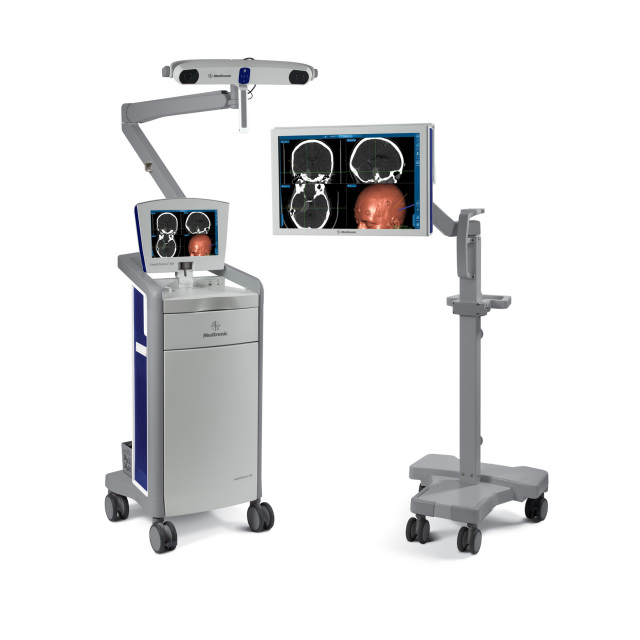
The system locates several anatomical points that will be superimposed on key points determined in the image test (RNM and TAC), which will allow us to determine our precise location by simply giving a point to the system. It is something like if we put a custom-made mask and after removing the mask we would give points from the inside of the mask to the machine, which would give us the equivalent point to the inside of our skull.
It is especially useful in the location of cerebral cortical lesions by allowing us an optimal centring of the craniotomy, equally useful in the location of deep brain lesions, as it will allow us to study the approach preoperatively.
The great advance that these tools have experienced has made them increasingly accurate. This removes the requirement for stereotactic frames in several complex procedures, such as deep brain biopsies, functional surgery, which can now be performed with the new neuronavigation equipment, resulting in greater comfort during the procedure.
INTRAOPERATIVE ECOGRAPHY
The use of intraoperative ultrasound scans in neurosurgery opens new perspectives in the neurosurgeon's knowledge of the interior of the cranial or spinal cavity during neurosurgical interventions, avoiding unnecessary manoeuvers and allowing the application of usual techniques in diagnostic ultrasound to neurosurgical procedures .
ENDOSCOPIC SURGERY
"Minimally invasive surgery" is the future and increasingly the present of neurosurgery. Endoscopy applied to our speciality allows to achieve equivalent results, or even better, than classic neurosurgery with large cranial openings, with minimal damage to the vital tissues of the nervous system, as well as a faster and better recovery of the patient operated on.
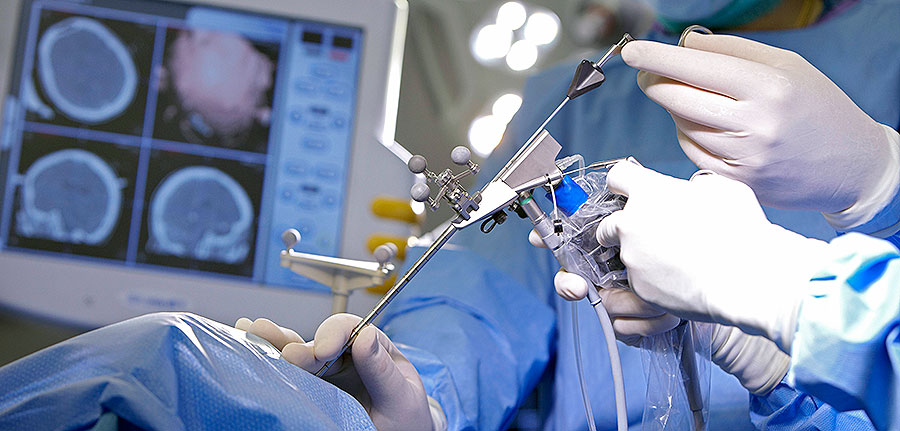
Endoscopy is used in various pathologies within neurosurgery.
We have experience in various types of endoscopy applications in neurosurgery. Specifically, we apply endoscopic techniques in four major groups of neurosurgical pathology :
- Ventricular neuroendoscopy .
- Transnasal endoscopy .
- Endoscopy applied to spinal surgery.
- Endoscopy as an assistant to microneurosurgery .
Endoscopy is a surgical technique with great advantages for the patient, both in the resolution of their pathology and in avoiding the aggression that represents the excessive manipulation of the delicate structures of the nervous system. For this reason, our group is strongly committed to endoscopy for the best treatment of our patients.


